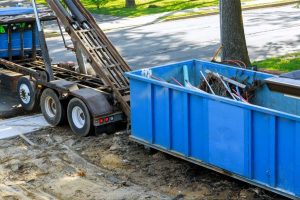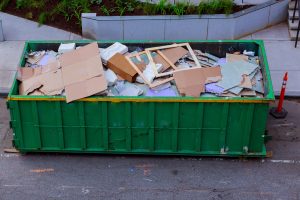In an era of growing environmental concerns and a heightened need for sustainable practices, the field of waste management has taken center stage. Among its many facets, junk removal has emerged as a crucial area where sustainable solutions can make a significant impact. This article delves into the world of junk removal and explores the innovative and eco-conscious approaches that are reshaping the landscape of waste management. By navigating these sustainable solutions, we not only contribute to a cleaner environment but also pave the way for a more sustainable future.
The Challenge of Junk: A Growing Problem
As the pace of modern life accelerates, so does the accumulation of waste. From outdated electronics and furniture to packaging materials, junk has become an inevitable byproduct of our consumer-driven society. The challenge lies not only in the sheer volume of waste but also in its proper disposal. Traditional methods of junk removal often involve indiscriminate dumping, contributing to pollution, land degradation, and the depletion of natural resources.
Rethinking Junk Removal: The Sustainable Paradigm Shift
Embracing sustainability in junk removal necessitates a paradigm shift – a departure from the linear “take, make, dispose” model towards a circular economy that values resource efficiency and waste reduction. Sustainable solutions in junk removal encompass a range of strategies that prioritize environmental conservation and long-term viability.
Recycling and Upcycling
Recycling and upcycling stand as the cornerstones of sustainable junk removal. Materials such as metals, plastics, and paper can often be reprocessed and reintroduced into the production cycle, reducing the demand for virgin resources. Upcycling takes this a step further, transforming discarded items into higher-value products, thereby extending their lifespan and minimizing waste.
Donations and Reuse
One person’s junk can be another person’s treasure. Donating usable items to charities or organizations not only prevents them from ending up in landfills but also benefits those in need. Encouraging the reuse of furniture, electronics, and clothing not only reduces waste but also conserves the energy and resources required to manufacture new products.
E-Waste Management
Electronic waste, or e-waste, presents a unique challenge due to its hazardous components. Sustainable e-waste management involves proper disposal, recycling of valuable materials, and the safe handling of potentially harmful substances like lead and mercury. This approach prevents toxic chemicals from leaching into the soil and water, safeguarding both human health and the environment.
Composting Organic Waste
Junk removal isn’t limited to manufactured items; it also includes organic waste. Composting presents a sustainable solution for dealing with organic materials like food scraps and yard waste. By diverting organic waste from landfills, composting reduces methane emissions and enriches soil quality, contributing to healthier ecosystems and sustainable agriculture.
Technological Innovations
Technology plays a pivotal role in sustainable junk removal. Advanced sorting systems, waste-to-energy processes, and data-driven analytics are revolutionizing how we manage and minimize waste. These innovations enable more efficient separation of recyclables, harness energy from non-recyclable waste, and optimize waste collection routes to reduce carbon emissions.
Takeaway
The journey towards sustainable solutions in junk removal involves a collective effort from individuals, businesses, and policymakers. By embracing recycling, upcycling, donations, responsible e-waste management, composting, and technological advancements, we can navigate our way toward a cleaner environment. This commitment not only addresses the immediate problem of waste but also contributes to the broader goal of building a sustainable future.
As we stand at the crossroads of environmental degradation and responsible stewardship, the choices we make today ripple into the future. Sustainable junk removal isn’t just about cleaning up the mess; it’s about transforming waste into opportunities, preserving resources, and ensuring that our planet remains vibrant and thriving for generations to come. Through these innovative solutions, we navigate a path toward a cleaner, greener, and more sustainable environment.






